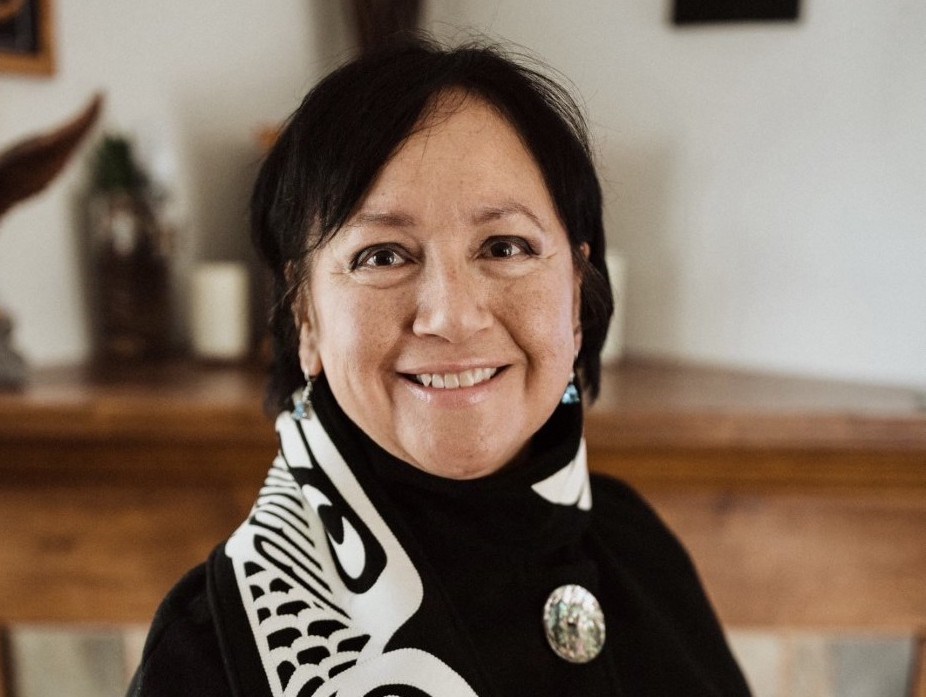"Our home is where we learn who we are," says Carol Archie in an Aboriginal Housing Management Association (AHMA) video, which features people speaking about the experience of being unhoused.
AHMA, the not-for-profit society for Indigenous by Indigenous housing authority, is involved with the Esḵéḵxwi7ch tl’a Sp’áḵw’us Place housing project on Government Road in Squamish.
The 27-unit Hiy̓ám̓ Housing-run residence will house Sḵwx̱wú7mesh Úxwumixw (Squamish Nation) women and children.
AHMA will be the administrator of the operating agreement for Hiy̓ám̓ Housing.
But what is AHMA?
Members of the almost 30-year-old organization manage more than 95% of all Indigenous housing units in urban, rural, and northern parts of B.C., and it administers funds for almost 10,000 Indigenous individuals and families.
(While journalists and governments typically use the terms “on and off reserve” when discussing housing, this is increasingly seen as colonial language. Instead, AHMA refers to those living in "off-reserve" housing as those living in the province's urban, rural, and northern parts.)
Put another way, AHMA members get access to funding, operational and asset management support, as well as access to resources, training and connection with other Indigenous housing providers.
Margaret Pfoh, AHMA CEO, says that the Squamish Government Road housing project addresses a little talked-about aspect of reconciliation.
"That gap that was created for Indigenous peoples—First Nations, Métis and Inuit—through the legacy of colonization of peoples that are finding themselves in urban, rural and northern communities, which are off reserves across Canada, and disconnected from their ... communities."
AHMA also advocates for issues around housing on behalf of its members.
"The increased financial pressures on housing providers have been astronomical, and the province simply isn't in a good place to respond appropriately right now. It's our job to be that advocate; it is our job to say we recognize your financial pressures, we're going to go after the province, or we're going to go after the feds, or we're going to get creative, and we'll find another funding stream to support providers like Hiy̓ám̓ and allow providers like Hiy̓ám̓ to focus on their job, which is supporting the people that they're housing," Pfoh said.

Photo courtesy AHMA
But why Indigenous-specific housing?
Pfoh, who has worked in roles supporting Indigenous housing for three decades, used a personal story to explain why an Indigenous-specific housing authority is needed.
Seven years ago, when Pfoh was hired at AHMA, she was a homeowner in Mission but wanted to rent in West Vancouver, where the AHMA head office is, to avoid traffic snarls having to commute.
One rental manager accepted her application and asked her to visit the unit.
When she announced her arrival at the building, the manager came out, saw her at the door, but pretended he didn't and turned around, Pfoh said.
"I'm sure I didn't sound Indigenous enough to him, but when he saw the colour of my skin, he did one of those walk-bys. Like, I didn't see you at the door, and I got ghosted," she recalled.
"I have a good job, a good income, I have a really good reference. I have my own home."
The first urban, then-called "native" housing programs were created back in the 1970s when Indigenous peoples found that they were facing racialized discrimination when applying for rentals, Pfoh said.
This still happens, she added.
It is something mentioned in the AHMA video by others who have recently experienced homelessness.
"We know it happens even today, and some communities are even worse [than others]," she said.
"We know there are some communities that are overtly disinclined to support Indigenous developments, and so it's been a huge push and process. Beyond needing to house people because there's racial discrimination in the community, communities will create Official Community Plans and development barriers that actually prohibit and marginalize the development of Indigenous-led housing programs. And that's happening today."
Culturally safe
Indigenous-led and created housing, such as Esḵéḵxwi7ch tl’a Sp’áḵw’us Place (meaning gathering place of eagles in the Squamish language), is said to be culturally appropriate or culturally safe.
But what does that mean?
"There's just a comfort and confidence that comes—when you've been living in a marginalized, racially discriminatory life, where you just can't be white enough to meet community standards—having an Indigenous-led organization with Indigenous governance and Indigenous staff is automatically one less barrier to feel like you actually have a chance here, you actually have an opportunity here," said Pfoh.
"For Indigenous by Indigenous housing is an act of reconciliation. It's an act of helping our communities feel empowered to put culturally relevant housing, in the communities where our people are seeking that sense of belonging."
You can find out more about AHMA on its website.
Find out more about the local Esḵéḵxwi7ch tl'a Sp'áḵw'us Place project, on Hiy̓ám̓ Housing’s site.
**Please note, the story has been corrected since it was first posted to say that AHMA has been operating almost 30 years, not 25 as first stated.


